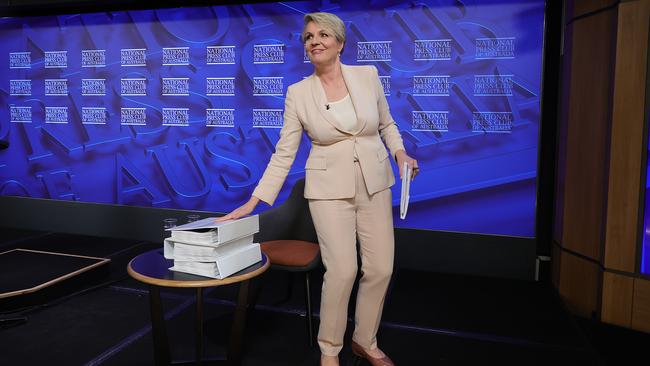The State: Environment will suffer without River Murray buybacks
There’s no possible way an extra 450GL will be returned to the River Murray on time under the current system, writes Gabriel Polychronis.
Opinion
Don't miss out on the headlines from Opinion. Followed categories will be added to My News.
When Tanya Plibersek took the stage at the National Press Club in Canberra on Tuesday, hopes ran high for an ambitious and sweeping plan to help fix the country’s dying environment.
Vague commitments and promises were made – like protecting 30 per cent of Australia’s land and oceans by the end of the decade – but the accidental Environment and Water Minister offered little in the way of convincing detail.
After releasing the damning State of the Environment report, Plibersek spent much of her address levelling blame at the Coalition for a “decade of inaction”.
South Australians should be disappointed Plibersek did not provide any solutions to save the floundering Murray-Darling Basin Plan, which included a promise to return an extra 450GL of freshwater back into the system for the environment.
Instead, she told a national audience the target was essentially doomed, declaring it was “next to impossible” to achieve because only 2GL had been returned in some 10 years.
“I have to confess … I didn’t know how far behind we were on meeting those environmental flows until I took on this portfolio,” Plibersek said. That statement was fair enough, since she expected to be Education Minister, but surely her boss knew.

A cornerstone piece of Prime Minister Anthony Albanese’s winning election campaign was a promise to fix up the Murray-Darling Basin Plan and deliver the 450GL in full by the June 2024 deadline. Albanese outlined a five-point strategy, which involved greater investment in water monitoring and science, without ever mentioning it would be “next to impossible” to achieve.
The 450GL is not all for SA – it’s for the basin as a whole, and was a promise made to the state as a condition for signing up to the framework a decade ago. It is a commitment on top of the primary 2075GL “Bridging the Gap” target, which has largely been met.
Since winning the election in May, the public is no clearer on when or how Labor’s plan for the extra 450GL will be implemented.
In a further indictment on the Albanese government, The Advertiser this week revealed SA’s Environment and Water Minister Susan Close was on a completely different page to her federal counterpart.
Thankfully Dr Close had a more positive outlook, telling The Advertiser such a large volume of water is possible to recover within two years.
Controversial to some regional communities, Dr Close urged the federal government to lift the cap on buybacks allowing the Commonwealth to purchase water entitlements from farmers and irrigators. Plibersek says it’s “too early” to rule anything in our out” – her favourite saying since becoming minister.

The practice has copped significant backlash from remote communities, particularly from upstream states. While buybacks are purely voluntary, the criticism is that taking water away from farmers and using it for environmental projects reduce the productivity of growers.
Smaller crops means fewer jobs which then, in severe cases, leads to major population decline. Or so the argument goes.
The Murray-Darling Basin Royal Commission largely dispelled these arguments as “deeply flawed” and “could be debunked by an economics graduate”.
The 756-page report concluded recovering water though buybacks is “considerably less expensive than through irrigation efficiency upgrades”, and that money generated from the sales was usually spent locally.
Peta Derham, the general manager of Water Resource Plans and Basin Policy, told a recent Senate Estimates hearing that the NSW Murrumbidgee irrigation automation project will add just 5.5GL in water for the environment.
When you consider this huge project costs $126m, it is hard to fathom any scenario where the 450GL target is reached without using water buybacks. As Dr Derham pointed out: “It’s lots of work for small amounts of water”. It seems the only options now are – abandon the target, or use buybacks.
As of this month, just four projects worth a combined $344.58m had been approved under the whopping $1.54bn off-farm efficiency program fund. The total volume of water contracted to be recovered under these projects is 23.3GL.
Combine that with the 2GL already recovered – the basin is still some 425GL short.
The average price of water last financial year was a low $77 per ML and the agriculture department is expecting prices to hover at $80 per ML. Resuming buybacks while costs are low would not only get the water back on time – it would soften the blow on the budget and, therefore, taxpayers. But the federal government must be prepared to step in and help communities in the off chance any sign of community decline is spotted.




